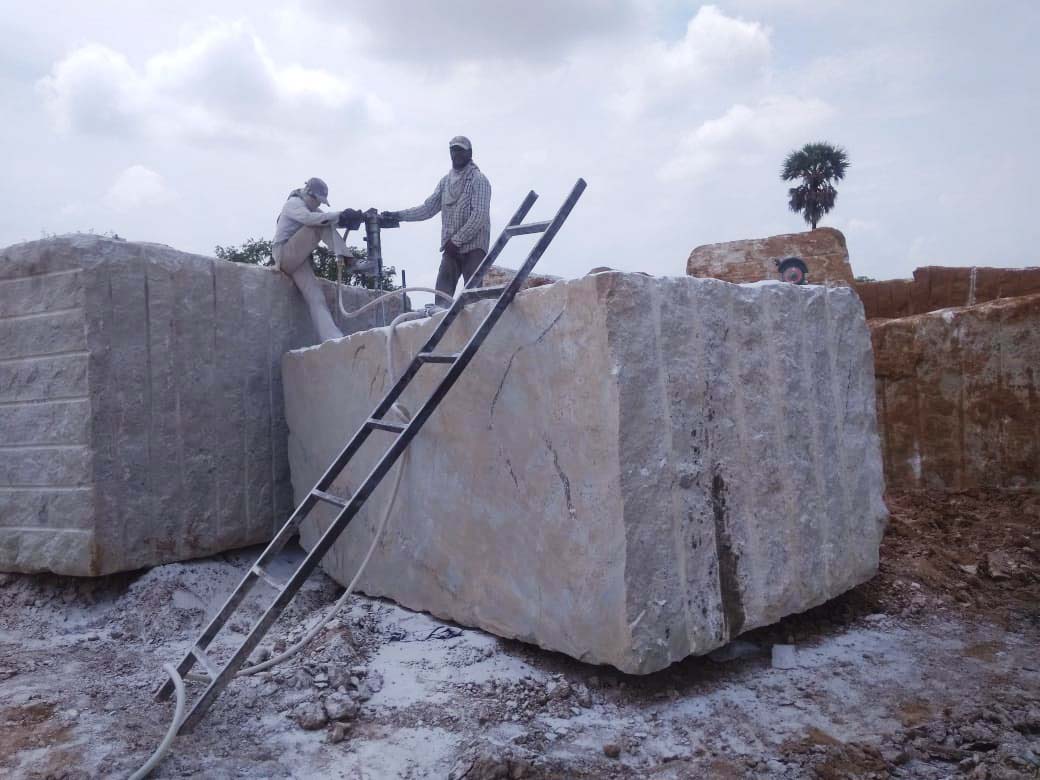A Journey Through Granite Quarries in South Africa: Introduction Nature's Virtuosity
Discovering the Rich Background and Sustainable Practices of Granite Quarrying
As we depend on the precipice of uncovering the detailed tapestry of granite quarrying, a journey via time discloses not just the physical act of drawing out stone however also the social and historical significance woven into the really material of this technique. From the ancient origins that laid the structure for modern quarrying techniques to the lasting practices that are shaping the future of this sector, each carve mark on granite surfaces narrates waiting to be unearthed (granite quarries in south africa). The legacy of granite quarrying stretches much past simple removal; it is a testament to human ingenuity, strength, and the enduring allure of this majestic stone
Ancient Beginnings of Granite Quarrying
Going back to old people, the practice of quarrying granite has been an important component of human background and building development. The earliest proof of granite quarrying days back to old Egypt, where massive pyramids and elaborate sculptures were crafted from this resilient stone. The Egyptians utilized primitive devices to remove granite blocks from quarries, showcasing the value of this product in their huge constructions.
Progressing in history, the Greeks also made significant payments to the quarrying of granite. The Greeks utilized granite in different building wonders, such as holy places and statuaries, showing their skill in shaping and sculpting this durable rock. The Romans additionally improved the methods of quarrying granite, utilizing innovative devices like blades and hammers to essence and shape granite for their renowned structures.
Through the centuries, the practice of quarrying granite has actually advanced, with modern-day technologies improving efficiency while maintaining the ageless allure of this all-natural stone - granite quarries in south africa. From ancient worlds to contemporary builders, the heritage of granite quarrying proceeds to form our world
Evolution of Quarrying Strategies
The development of quarrying methods has actually been marked by a continual progression in the direction of greater performance and precision in removing granite. Early quarrying techniques included hand-operated labor with basic devices such as chisels, hammers, and wedges to draw out granite blocks from the planet.
In more recent times, the arrival of equipment revolutionized the quarrying market, making it possible for faster removal rates and increased productivity. Technologies such as diamond cord saws, high-pressure water jets, and pneumatically-driven drills have ended up being basic in modern-day quarries, allowing for accurate cutting and minimized waste. In addition, developments in computer-controlled devices and 3D modeling have actually maximized quarrying operations, resulting in marginal ecological influence and improved sustainability practices. As the demand for granite proceeds to increase, the advancement of quarrying strategies continues to be integral to meeting industry needs efficiently and sustainably.
Cultural Importance of Granite
Granite holds a profound cultural significance across different human beings because of its long-lasting visibility in building work of arts and respected monuments. From the impressive pyramids of Egypt to the detailed makings of the Angkor Wat temple in Cambodia, granite has been a material of selection for revealing splendour and longevity in cultural heritage. In old Rome, granite columns decorated temples and public structures, representing stamina and permanence. The cultural value of granite expands beyond its physical characteristics; it embodies strength, stability, and eternity, making it a sign of enduring heritages and customs.

Sustainable Practices in Quarrying
Among the abundant history of granite quarrying and its social value exists a growing focus on sustainable practices within the market. As environmental awareness Get More Information and problems regarding resource deficiency have heightened globally, the quarrying sector has actually significantly welcomed sustainable techniques to decrease its influence on the atmosphere and bordering communities.

In addition, improvement and recovery of quarry sites post-extraction are indispensable to sustainable practices. By recovering quarried locations to an all-natural or advantageous state, such as creating wildlife environments or entertainment rooms, quarriers can counter the ecological impact of their procedures and contribute positively to the local ecosystem.
Tradition of Granite Quarrying
With a historical backdrop soaked in workmanship and industrial development, what enduring influence has granite quarrying left on the landscape of modern society? The tradition of granite quarrying transcends plain removal methods; it has shaped building marvels, urban landscapes, and social heritage worldwide. The sturdy nature of granite has actually made it a favored option for monuments, structures, and facilities, standing as a testament resource to the ability and virtuosity of quarry workers across generations.
Furthermore, the financial footprint of granite quarrying can not be neglected. The sector proceeds to give employment possibility and drive local economic situations in areas where granite extraction prevails. It has actually also stimulated technological advancements in quarrying strategies and devices, leading to a lot more effective and lasting practices.
In regards to sustainability, the heritage of granite quarrying includes efforts to minimize environmental influences via reclamation jobs and responsible source management. By balancing economic passions with ecological stewardship, the sector strives to make sure that future generations can proceed to take advantage of this enduring natural deposit.
Verdict
